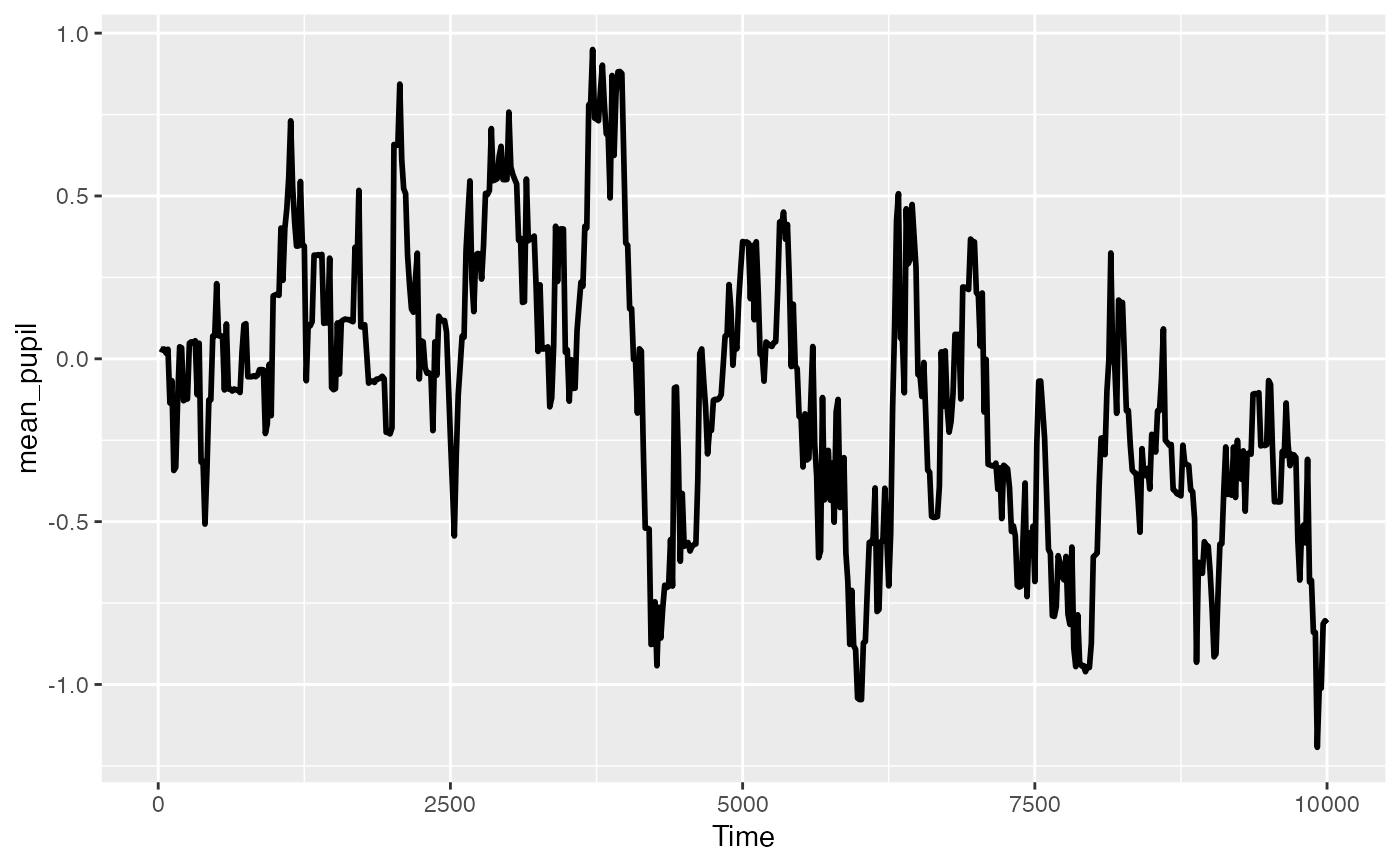Create a difference data frame when dealing with a condition column with 2 levels
Source:R/functional_data.R
create_difference_data.Rd
The difference data frame is used when creating a dataframe to do the functional t-test analysis. This function would be the first step in that analysis, after doing the pre-processing. It creates a frame where it treats the condition data as level2 - level1. It will throw an error if there are more than two conditions.
create_difference_data(data, pupil)Arguments
- data
-
a PupillometryR dataframe
- pupil
-
column name for pupil data
Value
A Pupil_difference_data data frame
Examples
Sdata <- make_pupillometryr_data(data = pupil_data,
subject = ID,
trial = Trial,
time = Time,
condition = Type)
mean_data <- calculate_mean_pupil_size(data = Sdata,
pupil1 = RPupil, pupil2 = LPupil)
base_data <- baseline_data(data = mean_data, pupil = mean_pupil, start = 0, stop = 100)
#> Baselining for each subject and trial. If this is not the intended behaviour you may wish to do this manually.
differences <- create_difference_data(data = base_data, pupil = mean_pupil)
#> Hard minus Easy -- relevel condition if this is not the intended outcome
plot(differences, pupil = mean_pupil, geom = 'line')
